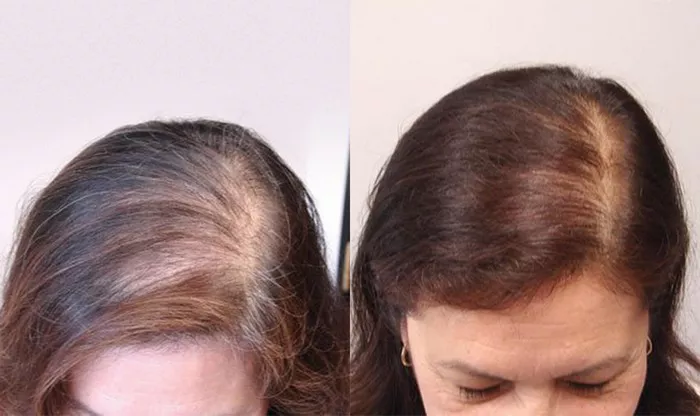Hair loss, medically termed alopecia, is a widespread concern affecting millions of individuals worldwide, transcending age, gender, and ethnicity. While it is a natural part of the hair growth cycle to shed hair daily, excessive or premature loss can lead to thinning or balding, causing distress and impacting self-esteem. Unraveling the complexities of hair loss requires delving into its multifaceted nature, exploring genetic predispositions, environmental influences, hormonal imbalances, and lifestyle factors. In this comprehensive examination, we aim to elucidate the primary problem of hair loss, offering insights into its mechanisms, contributing factors, and potential avenues for prevention and treatment.
The Intricacies of Hair Growth: An Overview
Hair, a defining feature of human appearance, undergoes cyclical phases of growth, regression, and resting. The hair growth cycle comprises three main stages:
1. Anagen Phase: This phase, known as the growth phase, sees active hair growth. It typically lasts between two to seven years, during which hair follicles produce new hair cells at a rapid rate.
2. Catagen Phase: Following the anagen phase, hair enters a transitional phase lasting for approximately two weeks. Hair growth ceases, and the outer root sheath shrinks, leading to detachment from the blood supply.
3. Telogen Phase: The resting phase, lasting around three months, marks the culmination of the hair growth cycle. Shedding of hair occurs as new hair begins to push the old hair out.
The Main Culprit: Understanding Hair Loss
Hair loss ensues when the delicate balance of the hair growth cycle is disrupted, leading to an imbalance between shedding and regrowth. The primary problem of hair loss can be attributed to various factors, including:
1. Genetic Predisposition (Androgenetic Alopecia): Hereditary hair loss, also known as androgenetic alopecia, is the most common cause of hair loss, affecting both men and women. This condition is characterized by the gradual thinning of hair, typically starting at the temples or crown and progressing over time. Genetic factors play a significant role in determining an individual’s susceptibility to androgenetic alopecia, with variations in specific genes influencing hormonal pathways and follicular sensitivity to dihydrotestosterone (DHT), a potent androgen implicated in hair loss.
2. Hormonal Imbalances: Hormonal fluctuations can disrupt the hair growth cycle, leading to temporary or permanent hair loss. Conditions such as polycystic ovary syndrome (PCOS), thyroid disorders, and hormonal imbalances associated with childbirth or menopause can contribute to hair thinning or shedding. In men, elevated levels of DHT, a byproduct of testosterone metabolism, can shrink hair follicles, leading to miniaturization and eventual hair loss.
3. Environmental Factors: Exposure to environmental stressors, such as pollution, ultraviolet (UV) radiation, and harsh chemicals, can damage the hair shaft and follicles, compromising their integrity and impeding healthy growth. Additionally, excessive heat styling, frequent use of hair dyes, and tight hairstyles can contribute to traction alopecia, a form of hair loss resulting from repetitive tension on the hair shaft.
4. Nutritional Deficiencies: Adequate nutrition is vital for maintaining healthy hair growth. Deficiencies in essential nutrients, such as iron, zinc, vitamin D, and protein, can impair the hair growth cycle, leading to increased shedding and slower regrowth. Poor dietary choices, restrictive eating habits, and underlying medical conditions affecting nutrient absorption can exacerbate hair loss.
5. Stress and Psychological Factors: Chronic stress, anxiety, and psychological distress can disrupt hormonal balance and contribute to hair loss through mechanisms such as telogen effluvium, a condition characterized by excessive shedding due to the premature transition of hair follicles into the resting phase. Furthermore, psychological factors such as body image concerns and low self-esteem associated with hair loss can exacerbate emotional distress and perpetuate a cycle of hair loss.
Navigating Treatment Options: Addressing the Main Problem
Effective management of hair loss necessitates a comprehensive approach tailored to the underlying cause and individual needs. Treatment modalities aimed at addressing the main problem of hair loss include:
1. Medications: FDA-approved medications such as minoxidil (Rogaine) and finasteride (Propecia) are commonly prescribed for the treatment of androgenetic alopecia. Minoxidil, available as a topical solution or foam, promotes hair regrowth by stimulating hair follicles and prolonging the anagen phase. Finasteride, an oral medication, works by inhibiting the conversion of testosterone to DHT, thereby preventing further hair loss in men.
2. Hair Transplantation: Surgical interventions, such as hair transplantation, offer a long-term solution for individuals with advanced hair loss. Techniques such as follicular unit transplantation (FUT) and follicular unit extraction (FUE) involve harvesting hair follicles from donor sites and implanting them into recipient areas, resulting in natural-looking hair restoration.
3. Platelet-Rich Plasma (PRP) Therapy: PRP therapy involves extracting platelets from the patient’s blood and injecting them into the scalp to stimulate hair growth. Platelets contain growth factors that promote tissue repair and regeneration, enhancing the viability of hair follicles and stimulating dormant follicles to enter the growth phase.
4. Lifestyle Modifications: Adopting healthy lifestyle habits can complement medical treatments and promote optimal hair health. Strategies such as maintaining a balanced diet rich in essential nutrients, practicing stress-reduction techniques, avoiding excessive heat styling and chemical treatments, and using gentle hair care products can help mitigate hair loss and support regrowth.
5. Cosmetic Solutions: In addition to medical and surgical interventions, cosmetic options such as wigs, hairpieces, and camouflage products offer temporary solutions for concealing hair loss and enhancing aesthetic appearance.
Conclusion
Hair loss poses a significant challenge for individuals seeking to maintain healthy, vibrant hair and preserve their self-confidence. While the main problem of hair loss encompasses a myriad of factors ranging from genetic predispositions to environmental influences, understanding the underlying mechanisms is crucial for implementing effective prevention and treatment strategies. By addressing the root cause of hair loss through a multifaceted approach encompassing medical interventions, lifestyle modifications, and psychological support, individuals can embark on a journey toward restored hair health and renewed confidence.


